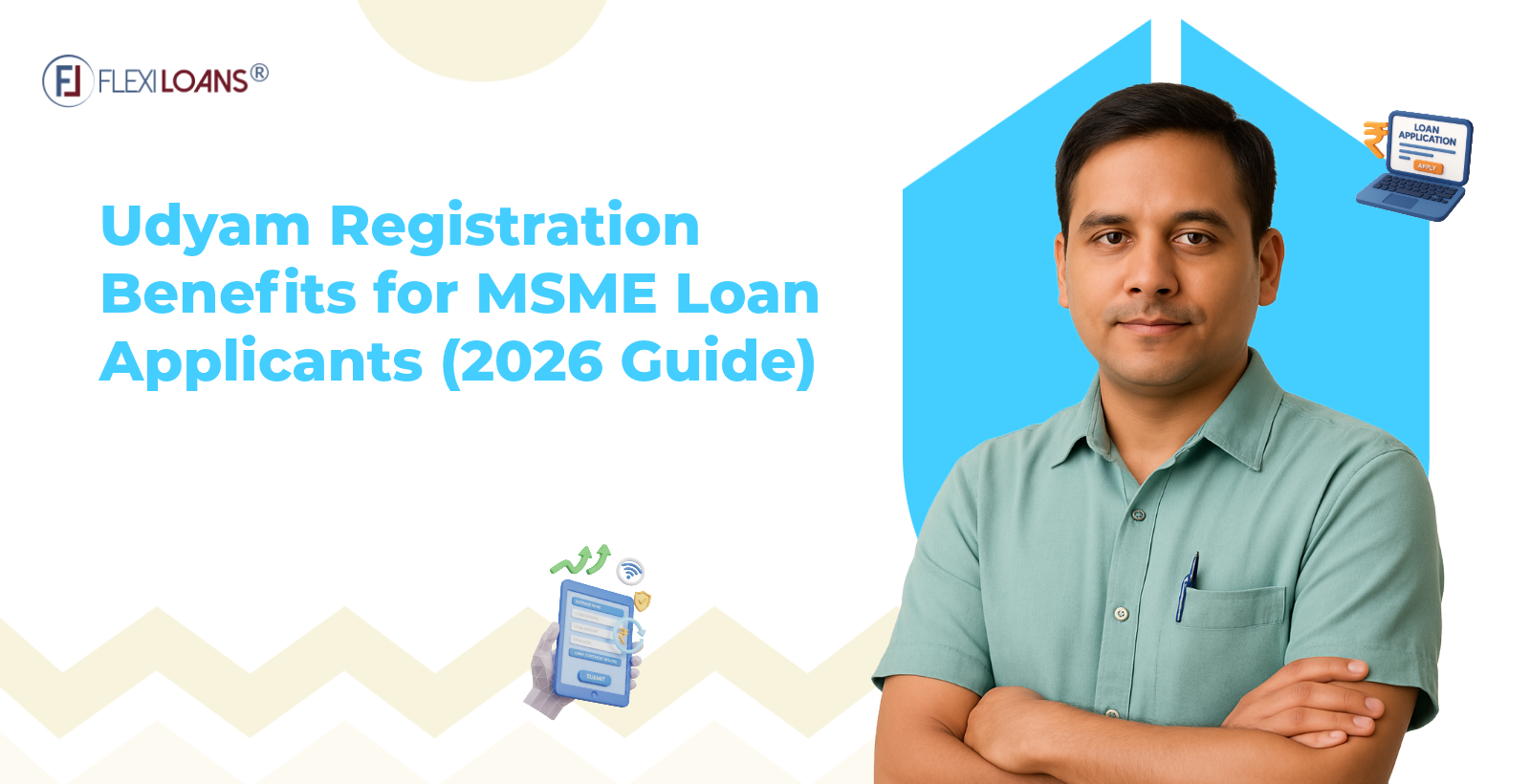May 18, 2021
Dec 02, 2025

The Indian government has launched a new initiative, “Make In India,” to encourage and support more SMEs and integrate them into India’s growth trajectory. Access to money is the most difficult task for SMEs today. To combat unemployment in our country, the government has launched different lending packages for small firms. Small Business Loan Scheme, Government of India, makes it possible for SMEs to participate in this expansion.
There are numerous variations of these programs, and young entrepreneurs can choose from several online platforms. The following are the top seven loans schemes from the Government of India available to small businesses.
PSB Loan in 59 Minutes
It is offered through government initiatives, is a working capital loan ranging from INR 10 lakhs to INR 5 crores. While interest rates can be modest, they are subject to business loan eligibility criteria.
The government business loan for small enterprises is that they approve or deny loans in 59 minutes rather than 30 days, and funds are disbursed in seven to eight days. The lender must be GST registered to qualify for the loan. The loan amount will be decided by the following factors.
- Income
- Repayments
MUDRA Loan
The Pradhan Mantri Mudra Yojana (PPMY) was intended to “finance the unfunded.” Individuals may obtain loans for non-farm activities from Public Sector Banks (PSB), Micro Finance Institutions (MFI), and Non-Banking Finance Companies (NBFC). Micro Units Development & Refinance Agency Ltd. is an acronym for Mudra. They are classified into three categories according to the step of development of the business requiring finance and the funds required.
As such, loans are not in any manner subsidized. If any loan application is linked to other government schemes for businesses that require a capital subsidy, the PPMY will also be applicable. MUDRA manages the Mahila Uddyami Scheme, a special refinancing scheme for providing a business loan for women in India. The MUDRA Loan interest rate is also lower if the business owner meets the criteria.
Types of Mudra Loans
- Shishu: Loans up to INR 50,000
- Kishor: Loans above INR 50,000 and up to INR 5 lakh
- Tarun: Loans between INR 5 to INR 10 lakhs
SMILE (SIDBI Make In India Soft Loan Fund For MSMEs)
The line of credit loan is available to both new and established MSMEs in the service or manufacturing industries and established small enterprises wishing to expand. The Small Industries Development Bank of India (SIDBI) launched this government credit scheme in 2015.
Its objective is to assist newly formed small enterprises in achieving a favorable debt-to-equity ratio. The minimum loan amount under the SMILE program is INR 25 lakh. Additionally, it features a 10-year loan repayment duration. Under the Indian government’s “Make in India” initiative, MSMEs in 25 designated areas will receive low-interest financing and loans will be offered as term loans.
Stand-up India Scheme for Protected Groups
It is designed primarily to satisfy the financial needs of individuals from Scheduled Caste (SC) and Scheduled Tribe (ST) and women entrepreneurs launching a new business. The business should be engaged in manufacturing, trading, or service. If it is not a sole proprietorship, the majority stake (51% ) should be held by an SC, ST, or woman entrepreneur.
The scheme gives a minimum of INR 10 lakh and a maximum of INR 1 crore to at least one woman and one SC/ST borrower. Stand-Up India is responsible for 75% of the project’s total costs, which include machinery, infrastructure, and working capital.
Credit Guarantee Scheme (CGS)
The government established the Credit Guarantee Fund Trust for Micro and Small Enterprises to provide easy credit to the MSME industry (CGTMSE). MSMEs can obtain a working capital loan of up to INR 2 crores under this plan. The CGS loan is another unsecured business loan scheme for small businesses in India that doesn’t need you to pledge collateral or insure any property. A maximum of INR 2 crores can be insured under this scheme.
The program is also open to established and emerging businesses. Additionally, of all the government loan schemes for small businesses, this financing program is available to micro-, small-, and medium-sized firms. It includes a guarantee for a significant part of the loan amount. The Guarantee Cover is offered up to a maximum of 85% of the credit facility’s sanctioned amount.
National Small Industries Corporation (NSIC) Schemes
NSIC provides financial support to micro-, small-, and medium-sized businesses through a variety of programs and schemes. Several critical NSIC services include the following.
Loans for raw materials
An MSME business loan offers financial assistance to meet their credit requirements. NSIC helps small businesses to finance their raw material purchase or get discounts on cash payments from their suppliers. Under this government business loan scheme, NSIC also helps small businesses get big-ticket loans from NCIS’s banking partners.
This government loan scheme aims to enhance these businesses’ competitiveness and uplift them to contribute to India’s growth story. Similar to other government subsidy schemes, it assists small enterprises in financing the acquisition of raw materials. Additionally, the system enables them to obtain bulk purchases and monetary savings from suppliers.
Assistance with loan applications
NSIC promotes lending to small businesses through their partner banks. It assists businesses in completing required papers and also follows up with banks on loan applications.
Pradhan Mantri Kisan SAMPADA Yojana (PMKSY)
The central government loan scheme works for food parks, food processing units, and cold storage houses. It aims to create a modern infrastructure with a robust and efficient supply chain that starts from the farms and goes on to the retail stores.
- Massive Food Parks
- Infrastructure for Integrated Cold Chain and Value Addition Capacity
- Development/Expansion of Food Processing/Preservation Capabilities (Unit Scheme)
- Food Safety and Quality Assurance
The initiative will not only help farmers with their products but also create myriad employment opportunities that will further aid India’s growth. The small business loan scheme is run by the Ministry of Food Processing Industries, a ministry under the central government.
Conclusion
The article covered the most well-known Govt loan schemes for small-scale industries in India. These loans have the lowest interest rates accessible in comparison to other commercial loans on the market. You can apply for business loans through any of these programs and ensure that your company’s growth is not hampered by a lack of funds.
FAQs: All About Government Business Loan Scheme
Anyone who owns or manages a small business is eligible to apply for a mudra loan. Loans from the Mudra Yojana are divided into three types. Shishu (for extremely small business units) category covers loans up to INR 50,000.
Under PMMY, the loans are categorized as MUDRA loans. Commercial banks, regional development banks, small finance banks, microfinance institutions, and non-bank financial companies provide these loans. The borrower may approach any of the above-mentioned lending institutions.
Eligibility requirements for a startup in India are,
-It must be registered as a Private Limited Company, Limited Liability Partnership, or Partnership Firm
-It cannot be the result of restructuring
-It cannot be more than five years old







